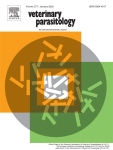Ver ítem
- xmlui.general.dspace_homeCentros Regionales y EEAsCentro Regional Santa FeEEA RafaelaArtículos científicosxmlui.ArtifactBrowser.ItemViewer.trail
- Inicio
- Centros Regionales y EEAs
- Centro Regional Santa Fe
- EEA Rafaela
- Artículos científicos
- Ver ítem
Validation and field evaluation of a competitive inhibition ELISA based on the recombinant protein tSAG1 to detect anti-Neospora caninum antibodies in sheep and goats
Resumen
Neospora caninum is a protozoan parasite that causes abortion and reproductive failure in small ruminants. We validated and evaluated under field conditions a competitive inhibition ELISA based on the truncated SAG1 protein (tSAG1) from N. caninum for the detection of anti-N. caninum antibodies in sheep and goat flocks. The assay was validated using 80 positive and 142 negative serum samples from sheep and goats analyzed by IFAT and immunoblot (IB).
[ver mas...]
Neospora caninum is a protozoan parasite that causes abortion and reproductive failure in small ruminants. We validated and evaluated under field conditions a competitive inhibition ELISA based on the truncated SAG1 protein (tSAG1) from N. caninum for the detection of anti-N. caninum antibodies in sheep and goat flocks. The assay was validated using 80 positive and 142 negative serum samples from sheep and goats analyzed by IFAT and immunoblot (IB). ciELISAtSAG1 was then used to evaluate the prevalence of anti-N. caninum antibodies in 1449 goats from 143 flocks and 385 sheep from 40 flocks and compared to IFAT. The prevalence of anti-Toxoplasma gondii antibodies was evaluated by IFAT. The ciELISAtSAG1 cut-off was ≥ 36 percent inhibition, with a diagnostic sensitivity of 100.0% (95% CI = 95.4–100.0%) and a diagnostic specificity of 98.6% (95% CI = 95.0–99.8%) relative to the agreement between IFAT and IB. The field evaluation revealed a concordance between ciELISAtSAG1 and IFAT of 97.4%, with an agreement (κ) of 0.90 for sheep sera, and a concordance of 96.5% with κ = 0.85 for goat sera. The overall prevalence of anti-N. caninum antibodies in sheep was 14.3% by IFAT and 15.8% by ciELISAtSAG1. In goats, prevalence was 12.9% by IFAT and 14.6% by ciELISAtSAG1. The overall prevalence of anti-T. gondii antibodies was 28.8% in goats and 43.8% in sheep. The ciELISAtSAG1 could be useful for large-scale detection of anti-N. caninum antibodies in sheep and goats, and for seroepidemiological investigations due to its appropriate sensitivity and specificity, and the simplicity of production.
[Cerrar]

Autor
Novoa, María Belen;
Aguirre, Nerina;
Ormaechea, Nadia;
Palmero, Sebastián;
Rouzic, Lisandro;
Valentini, Beatriz Susana;
Sarli, Macarena;
Orcellet, Viviana Mercedes;
Marengo, Rafael;
Vanzini, Victor Rene;
Primo, María Evangelina;
Fuente
Veterinary Parasitology : 109201 (Available online 7 August 2020)
Fecha
2020-08
Editorial
Elsevier
ISSN
0304-4017
Formato
pdf
Tipo de documento
artículo
Palabras Claves
Derechos de acceso
Abierto
 Excepto donde se diga explicitamente, este item se publica bajo la siguiente descripción: Creative Commons Attribution-NonCommercial-ShareAlike 2.5 Unported (CC BY-NC-SA 2.5)
Excepto donde se diga explicitamente, este item se publica bajo la siguiente descripción: Creative Commons Attribution-NonCommercial-ShareAlike 2.5 Unported (CC BY-NC-SA 2.5)

